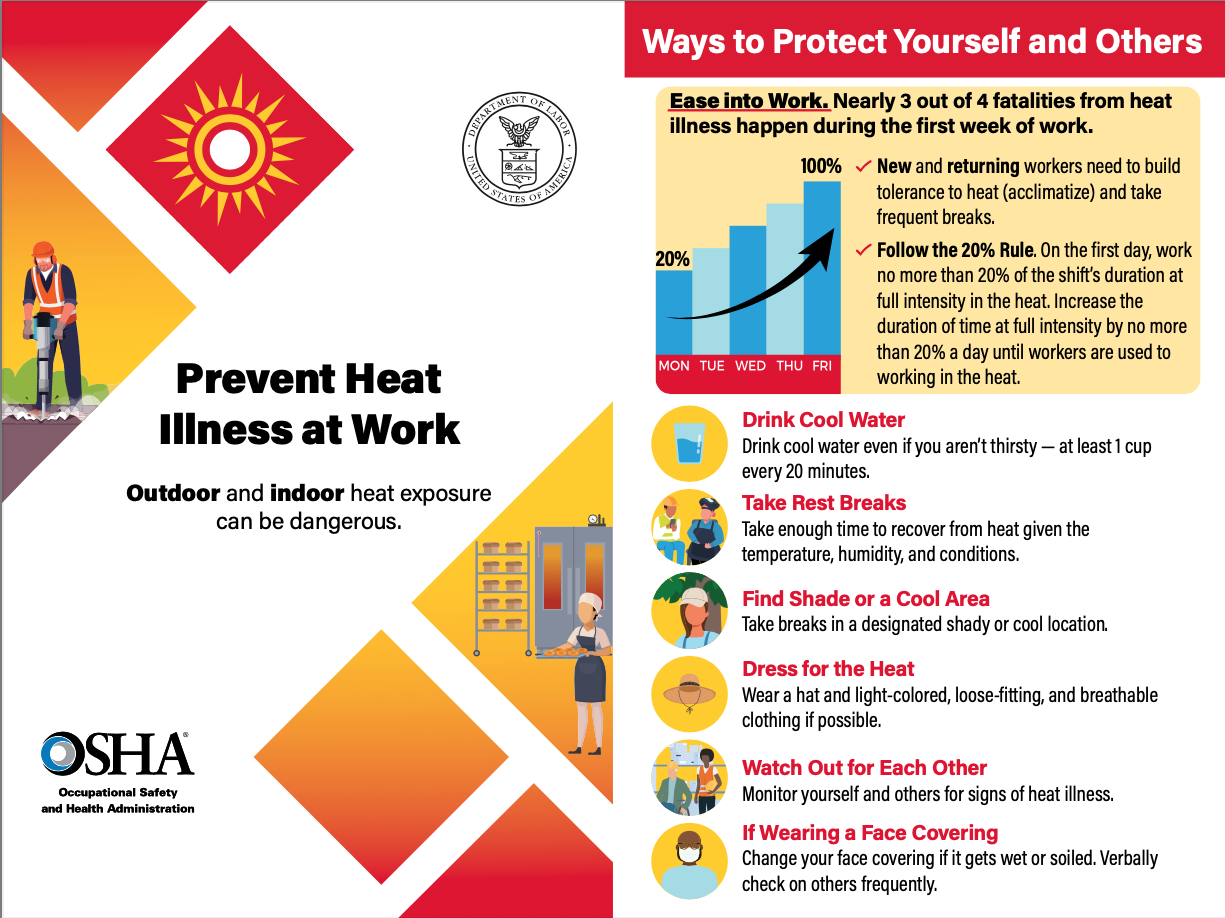Prevent Heat Illness At Work – U.S
Organization: Occupational Safety and Health Administration (OSHA)
Year: 2021

Heat-related illnesses are a serious workplace hazard, particularly for outdoor and high-exertion workers. OSHA’s guide provides essential information on recognizing, preventing, and responding to heat stress in work environments. It highlights key risk factors such as high temperatures, humidity, dehydration, and medical conditions that increase susceptibility to heat exhaustion and heat stroke.
The document outlines strategies for heat illness prevention, including proper hydration, frequent rest breaks, gradual heat acclimatization, and the use of protective clothing. Employers are encouraged to establish heat safety programs, educate workers on recognizing early symptoms, and implement emergency response procedures.
By understanding the warning signs—such as dizziness, confusion, excessive sweating, or nausea—workers and employers can take proactive measures to prevent serious health consequences. Heat stress management is critical for maintaining a safe and productive workforce, reducing workplace incidents, and ensuring compliance with safety regulations.
OSHA’s recommendations emphasize the importance of workplace planning, proper supervision, and heat exposure monitoring to minimize risks. Following these guidelines can help employers protect their workers from heat-related illnesses and ensure a safer work environment in hot conditions.